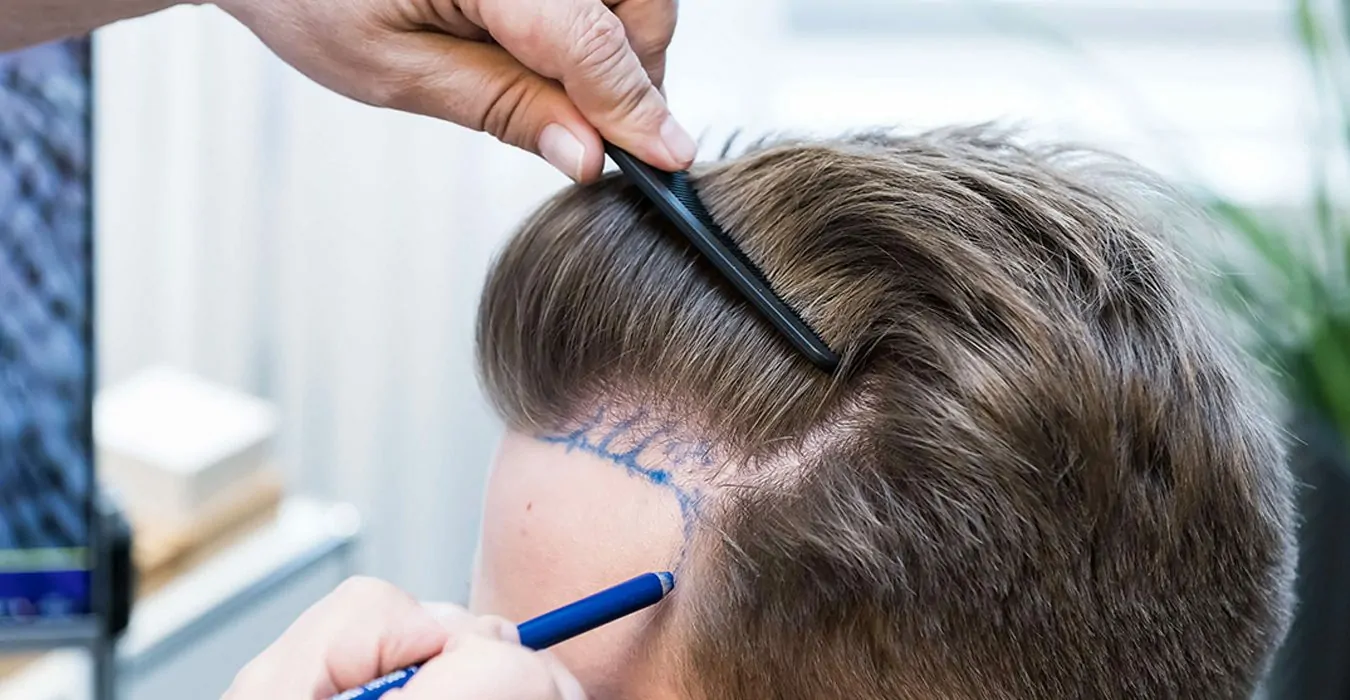Millions of people will experience hair loss throughout their life. Genetics plays the most significant factor in the most common types of baldness. In addition to genetics, medication, health conditions, stress, and hormonal changes can cause hair to fall out. Gradual thinning at the top of the head is the most common type of hair loss, affecting men more often than women.
While many people choose to let their hair run its natural course, others feel self-conscious and want a way to retain their natural appearance. There are many ways to deal with hair loss, including embracing baldness, wearing a hat or scarf, using chemical treatments, or undergoing a hair transplant. A transplant can be intimidating because of the procedure itself or the price tag. This article will cover what you need to know about when deciding if it’s right for you.
Understanding Hair Transplants
Ever-changing technology has made it possible for doctors to create natural-looking transplants. Early procedures often didn’t age well, and the hair plugs became more obvious over time. In the past, doctors would transplant more significant amounts of hair and reinsert them in rows (a bit like doll hair), so as time passed and natural thinning occurred, the implants became more pronounced.
Today, doctors use different methods to develop longer-lasting results that could fool even your barber. Doctors can extract single hair follicles and implant them more precisely for a natural look. Hair transplants use grafts of your hair follicles, meaning what grows is naturally yours.
Modern hair implants are minimally invasive and typically heal quickly. The process can take several hours and only requires localized anesthesia. Your recovery time will vary depending on the extent of your procedure and the type of procedure you choose. That said, most people get back to work within a couple of days.

What Impacts the Cost of a Hair Transplant?
Unlike other treatment options for hair loss, hair transplants can permanently solve balding issues and lead to regrowth. That said, the cost of a hair transplant is often the biggest roadblock for many patients. On average, patients can expect to pay between anywhere from $8,000 to $20,000 per procedure. That’s a lot, but you have to think of it as an investment.
The cost may fluctuate based on several factors, which we’ll explain more below. In addition to the procedures and medication, patients should consider lifestyle expenses. For example, you may need to factor in travel and any time off of work. You may need a week or two following the procedure to heal and reduce the risk of damaging the newly placed follicles.
Types of Hair Transplants
Hair transplants have evolved over time, and today there are two main types of hair transplants still performed. The older method is called follicular unit transplantation (FUT). This technique requires the removal of a strip of hair-bearing skin across the back of the head. That strip is then divided into follicular units and transplanted to areas with thinning or no hair. This procedure does require stitches and leaves a thin linear scar.
The more modern option is follicular unit extraction (FUE). Doctors often prefer to use the FUE technique. Hairs are removed individually and implanted in spots with thinning hair. Because of that, there is less scarring, shorter healing time, and the ability to extract hair from other parts of the body. Patients can expect to pay more for the FUE procedure as it’s more labor-intensive. However, the lack of scarring or sutures makes it worth it for some.
Both FUT and FUE hair transplant techniques are safe and effective options for addressing hair loss. The choice between the two often depends on individual factors and needs. For example, if you prefer a quicker healing time and minimal scarring, FUE may be the better choice. On the other hand, if you have a specific condition or require a larger number of grafts, FUT might be a more suitable option. It’s wise to consult a qualified surgeon who can assess your specific hair loss situation and recommend the most appropriate procedure for you.

Number of Grafts
The cost of a hair transplant is significantly influenced by the number of grafts a patient needs. Grafts are the individual hair follicles transplanted from the donor area to the recipient area, where hair is thinning or has been lost. The greater the number of grafts required, the more labor-intensive and time-consuming the procedure becomes.
The number of grafts needed varies from person to person and is contingent on several factors. One of the most crucial elements is the extent of hair loss or thinning. Individuals with more extensive hair loss, such as advanced male or female pattern baldness, often require more grafts to achieve satisfactory coverage and density. Additionally, the size of the recipient area and the specific hair restoration goals of the patient play a pivotal role. Some patients may opt for a conservative approach, while others may desire a more comprehensive restoration.
Moreover, the density and quality of hair in the donor area influence the number of grafts available for transplantation. Patients with a robust donor area can often undergo larger sessions and might require fewer procedures to achieve their desired results. The cost is directly proportional to the number of grafts, making it a crucial factor in the overall expense of the procedure.
Your Doctor
Your choice of doctor can significantly affect the cost of your hair transplant. The qualifications and experience of the surgeon you select can impact the overall expenses of the procedure. Highly skilled and reputable hair transplant surgeons often charge higher fees for their services, given their expertise and track record of successful results.
The geographical location of the clinic or surgeon’s practice can also influence costs. Medical services in certain areas, especially major cities, tend to be more expensive. In some cases, the reputation of the clinic and the surgeon’s portfolio can also drive up the cost. Established, well-known surgeons with a history of outstanding outcomes may charge premium fees.
It’s crucial to find a qualified and experienced surgeon who can meet your specific hair restoration needs while also being mindful of your budget. Balancing cost and quality is essential, and consultations with multiple surgeons can help you make an informed decision.

Research Your Procedure and Plan Your Budget
In your journey to restore your hair and confidence, understanding the factors that affect the cost of a hair transplant is essential. Since a hair transplant procedure is considered cosmetic, you’ll likely have to pay out of pocket for the procedure. The cost can be intimidating, but knowing the factors that influence it can help you justify it.
As you embark on your hair restoration journey, remember to research your procedure, plan your budget accordingly, and consult with experienced surgeons. Finding the perfect balance between cost and quality will take time. However, with the right knowledge and decision-making, a hair transplant can be the path to renewed self-assurance and a more confident you.

